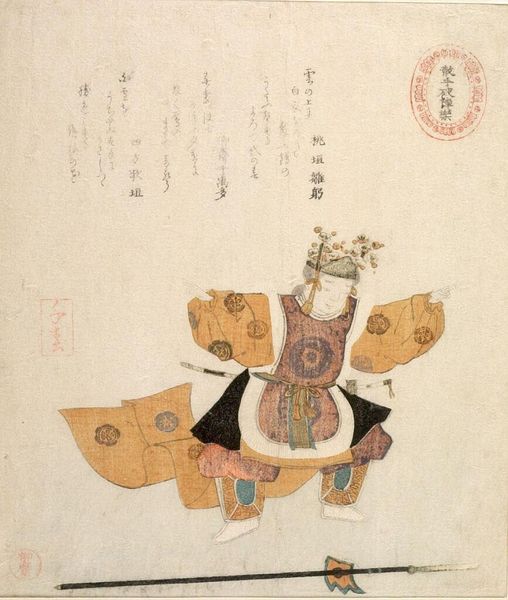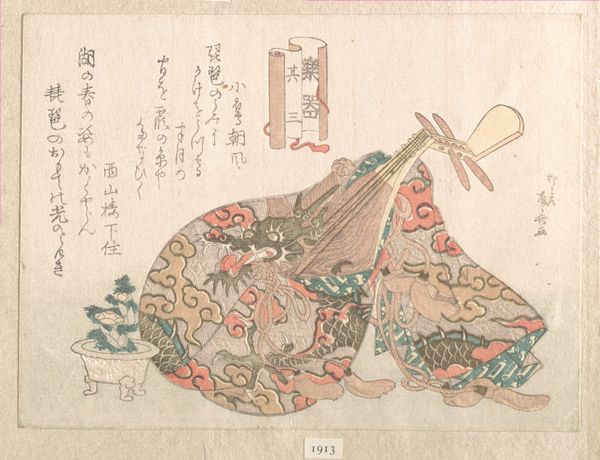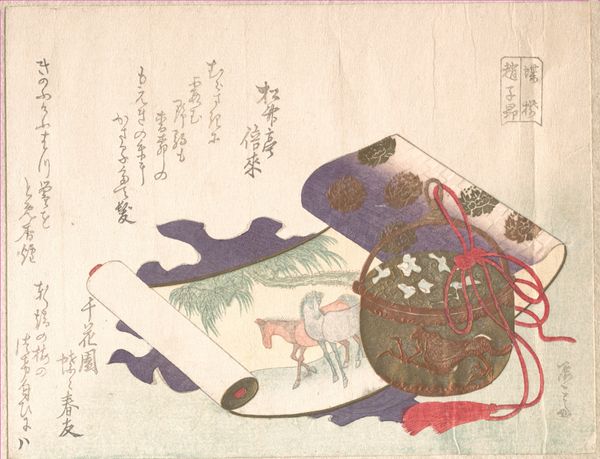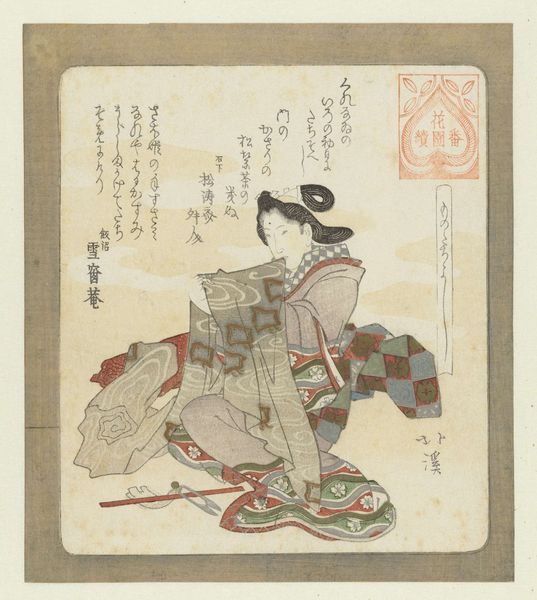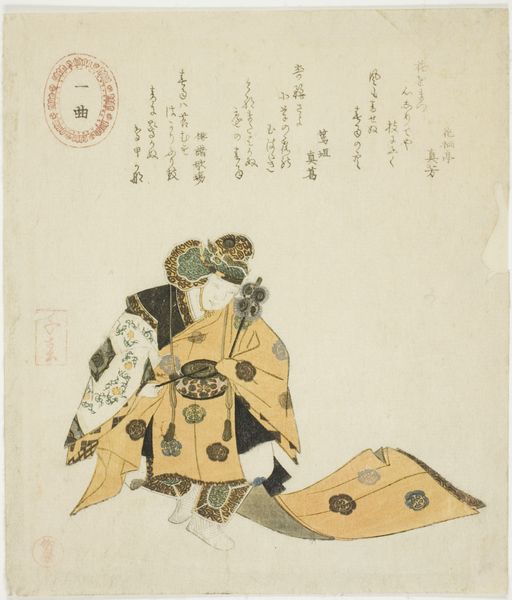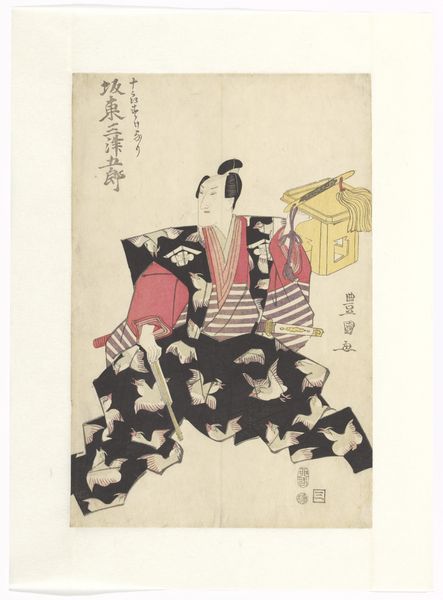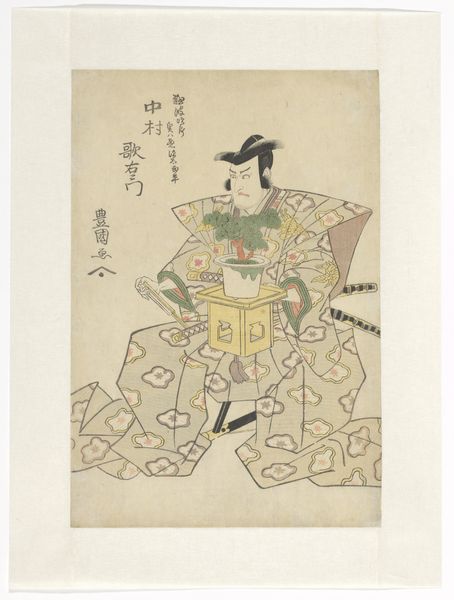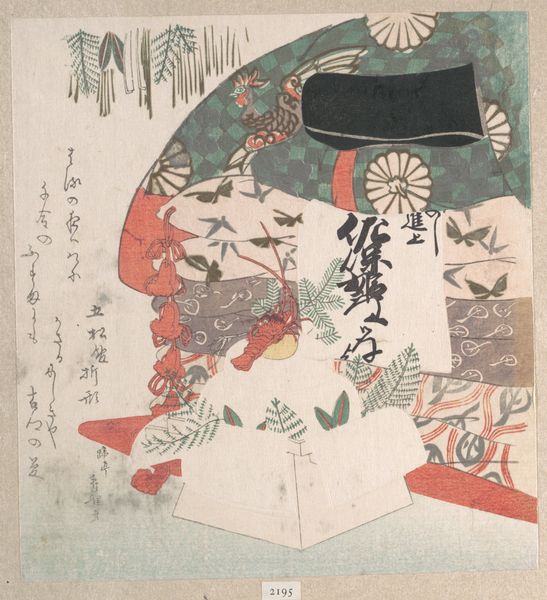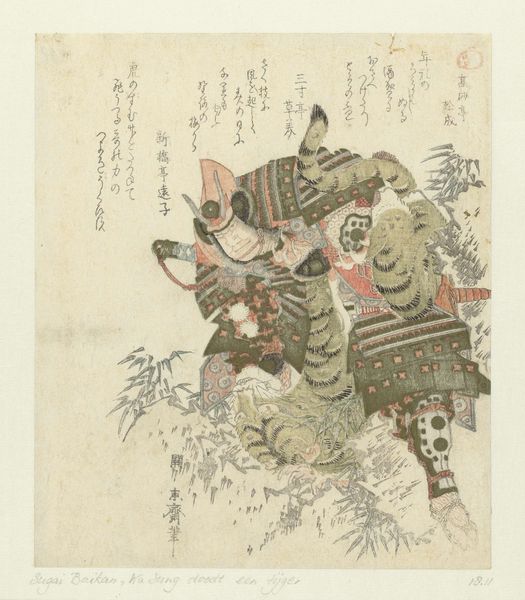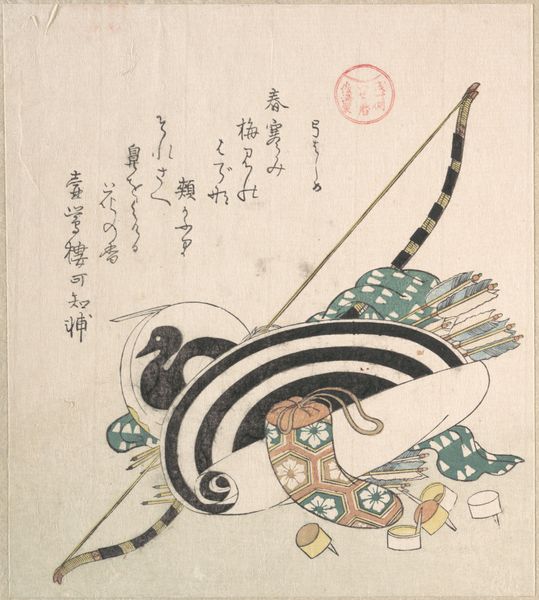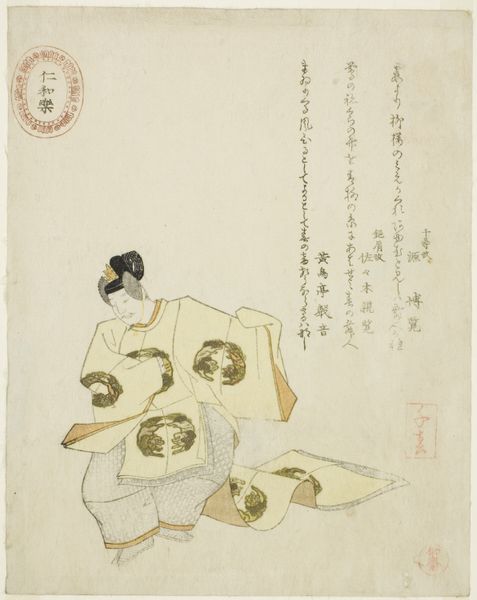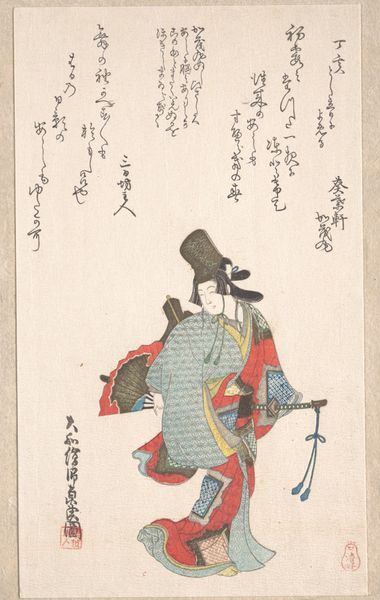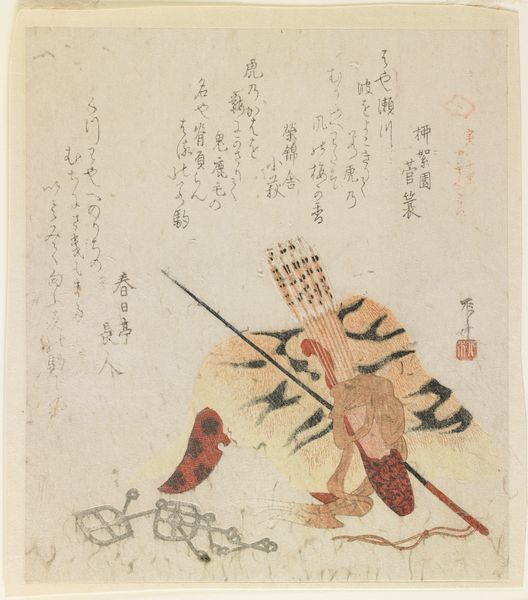
print, woodblock-print
# print
#
asian-art
#
ukiyo-e
#
figuration
#
woodblock-print
#
watercolor
Dimensions: height 209 mm, width 184 mm
Copyright: Rijks Museum: Open Domain
Curator: Before us we have "Dancer," a woodblock print created by Takashima Chiharu in 1823. This piece resides here at the Rijksmuseum, offering a fascinating glimpse into the world of Ukiyo-e. Editor: My first impression is one of quiet grace. The pose suggests dynamic movement, but the overall palette and the detail in the figure's costume also communicate a sense of poised stillness. It has a gentle quality. Curator: Absolutely. Considering the socio-political atmosphere of the time, we see a fascinating blend of escapism and cultural commentary within Ukiyo-e art. Takashima's choice of a dancer highlights the intersection of performance, gender, and societal expectations of Edo-period Japan. What do you think the use of material conveys in this piece? Editor: Well, thinking about it from a maker’s perspective, the use of woodblock printing is interesting. This technique inherently lends itself to the production of multiples, making art accessible to a broader audience, even if they were only a somewhat larger sector than more exclusive artworks. It democratizes the image and transforms artistic labor into a repeatable, almost industrial process, right? And the texture of the paper must impact how these watercolor pigments appear. Curator: Indeed, the intersectional narrative here is enhanced by how readily it was made accessible in a deeply class-conscious society. By focusing on performers, artists are highlighting often marginalized figures while also exploring shifting social identities and norms in society. Editor: It makes you think about who the artist, Takashima Chiharu, may have been. Was Chiharu challenging conventional expectations? The creation process and the image itself really emphasizes questions around the subject, gender and class tensions and, ultimately, the circulation of artistic labor in early 19th century Japan. Curator: Considering it further, perhaps the relative simplicity in composition emphasizes how social structures can sometimes rigidly confine individuals to set performances and actions in order to "dance" in public society. Editor: So true! Reflecting on its physical creation alongside its subject makes this so poignant! Curator: Yes, definitely a potent example of how the socio-political, technological, and material are deeply entwined.
Comments
No comments
Be the first to comment and join the conversation on the ultimate creative platform.
